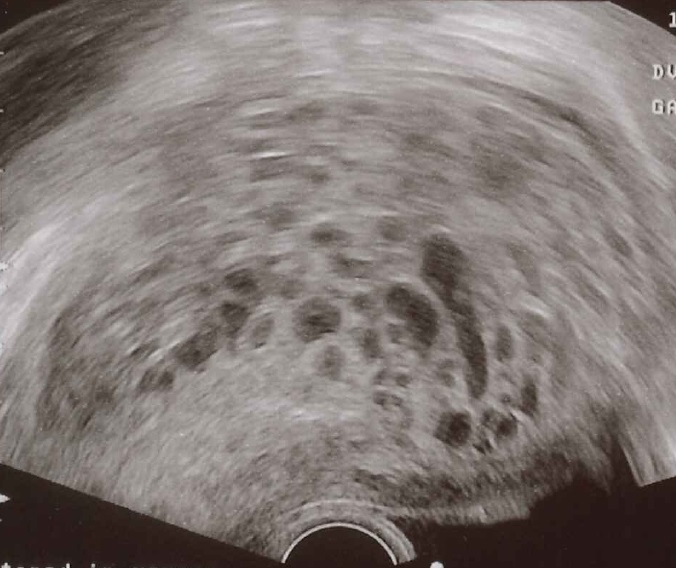Unusual pregnancies
Article curated by Rowena Fletcher-Wood
From two wombs to signs of pregnancy without an actual pregnancy, reproduction can be weird, wonderful, and sometimes scary. So what are some of the weirdest pregnancies out there?

Cryptic pregnancies
Unlikely though it seems, 1 in every 475 pregnancies is “cryptic”, which means they go unnoticed by the mother, sometimes until labour. How does that even happen?
Scientists have found some links to psychological disorders and social pressures like unsuitable circumstances (e.g. women in the military), but somatic denial can’t explain cryptic pregnancies altogether.
Biological factors include masking conditions, such as Polycystic Ovarian Syndrome (PCOS), which reduces fertility, creates fluctuating cycle lengths, and hormonal imbalances, or the menopause, which causes changes in weight, suppressed menstrual cycle, and hormone imbalances; birth control, especially hormonal birth control; or stress factors such as high levels of exercise, stress, or being underweight, which can lead to disruption of the menstrual cycle.
Symptoms are also reduced in the case of cryptic pregnancies. 74% of women with cryptic pregnancies experience pseudomenstrual bleeding[1] and lack of morning sickness; foetal movements may be mistaken for gas, and abdominal growth is reduced, with the foetus sitting closer to its mother’s back, and often underweight.
Tests that should be positive can also come out negative. A home pregnancy test and even blood test can fail like this when hCG levels are low, which they typically are in cryptic pregnancies. 12-week ultrasounds can fail to detect a living foetus if its implanted in the wrong or an unusual place, the uterus is unusually shaped, or the ultrasound device or technician make a mistake. Uteruses that are tilted towards the back (uterine retroversion) or heart-shaped (bicornuate) can conceal a pregnancy or make a foetus hard to see. Scar tissue can also get in the way, such as marks from a caesarean or tummy tuck.
There are three main biological theories behind cryptic pregnancies[2].
- Cryptic pregnancies may be a nonadaptive outcome of parent-offspring conflict – favouring the mother by giving her a bigger share of food, increasing her mobility, and making her less mate-dependent. This puts the foetus at risk, but the mechanism may have survived because babies born via cryptic pregnancies don’t seem to have anything else wrong with them except being undersized. The theory suggests this outcome is genetically driven.
- Cryptic pregnancies may come about when the mother’s body tries to spontaneously abort a foetus, either because it’s low quality or because she can’t produce enough hCG to support it. However, if the foetus can make just enough hCG, it can grow despite maternal rejection and her own biological investment is suppressed.
- Alternatively, a cryptic pregnancy could be an example of forced cooperation between mother and foetus under psychosocial stress. That is, the mother’s investment in the foetus is reduced, maximising her chances of surviving the stressful situation and therefore carrying the baby to term, at the potential expense of its overall health. These theories may not be mutually exclusive.


 2
2We don’t know how long cryptic pregnancies last because the women who get them didn’t know about it at the time. However, some think they last longer or shorter than recognised pregnancies. There are good reasons for these theories.
The theory that they last longer is based on the idea that hormone concentrations are lower, slowing foetal growth and so demanding a longer term. Others think that lack of prenatal care and pregnancy-conscious dietary choices increase the odds of a preterm birth.
Learn more about Cryptic Pregnancies (Things We Don’t Know about Pregnancy Series #20).


 2
2
Phantom pregnancies
Some weird pregnancies are not really pregnancies at all. For example, phantom pregnancies. Sometimes, like in many cryptic pregnancies, there is no medical evidence of pregnancy, but the woman still labours under the impression that she is pregnant. This is known as pseudocyesis, or delusion of pregnancy, or phantom pregnancy. Phantom pregnancies can also occur in males, and can last significantly longer than recognised pregnancies, some for many years. We don’t know why phantom pregnancies come about, but it correlates strongly with the post-menopause period and weakly with psychiatric disorders including schizophrenia, other psychotic disorder, mood disorders and organic brain disorder [3][4][5][6]. Some phantom pregnancies even show symptoms such as bloating, and the sufferer may report feeling nauesous.


 3
3Blighted ova
Also not really pregnancies are blighted ova. When the amniotic sac that usually contains a foetus develops without the foetus in it, this is known as a blighted ovum or anembryonic pregnancy. The empty sac means that the fertilised egg never implanted, or didn’t develop properly, and instead got reabsorbed back into the uterus. Whilst this happens early on, if the placenta continues growing, it makes all the hormones associated with pregnancy anyway, masking the loss. Normal pregnancy symptoms progress, and the sac often has to be removed surgically. Scientists don’t know what causes a blighted ovum, but it could be linked to complications chromosome 9 and is more common if the parents are biologically related.
Learn more about https://blog.thingswedontknow.com/2019/12/silent-miscarriage-things-we-dont-know.html.


 2
2Molar pregnancies
Molar pregnancies are non-viable pregnancies where cells develop to look like a bundler of fish eggs, but don’t form a foetus. No one knows why they happen, but they have to be surgically removed – occasionally by full hysterectomy. For a molar pregnancy to happen, there must something wrong with the fertilised egg, such as missing a nucleus – but not all non-viable eggs lead to molar pregnancies.
Molar pregnancy can spread deeper into the uterine tissues, known as an “invasive mole”, developing into cancer in 2-4% of cases. Younger (under 20) or older (over 35) women are more likely to suffer molar pregnancies, women who suffer nutritional deficiencies of protein, folic acid, or carotene, or women who’ve had a molar pregnancy before – we don’t know why.


 2
2
Polar body fertilisation
Polar bodies are daughter cells made during uneven mitosis. One cell, the egg, contains more than half of the nutrients, whilst the polar body contains less than half of the nutrients, and rarely survives. Whilst most disintegrate, scientists think some have the potential to survive and persist, and even be fertilised. This is currently just a theory, and we don’t yet have sufficient evidence either way. If they are fertilised, they may in any case lead to a non-viable pregnancy, or miscarriage.


 2
2
Superfetation

Superfetation shouldn’t happen. Once conception has occurred, hormones are released that prevent further ovulation, and a mucus plug blocks up the womb. It’s usually diagnosed when “discordantly developed young” are seen with separate amniotic sacs that can’t be explained any other way, but there have never been discordantly developed young documented that are more than a few weeks apart in growth.
Critics argue that these superfetation-like pregnancies have other origins, such as placental insufficiency, twin-to-twin transfusionembryonic diapause[7].
Alternatively, it may be a real reproductive strategy to maximise their number of offspring. But if it is, it opens up more questions than it answers, including why it’s so rare and what provokes it when it happens, how it evolved, how the endocrine system regulates it, and how the maternal and foetal microbiome and immune systems behave.
Scientists have attempted to classify superfetation into three groups[8]:
1. Superfertilisation (or superfecundation) describes the fertilisation of two or more ova by two different males. It happens when there are two or more eggs released together in one cycle, and two sexual acts within the fertility window. The result is twins babies with different biological fathers.
2. Superconception is what scientists think happens in “permanently pregnant” hares[9]. Towards the end of pregnancy, the female ovulates and mates. Researchers have shown this ovulation using high-resolution ultrasound imaging to show fresh corpora lutea (cysts that form when eggs exit the ovaries). After giving birth, the egg then implants in the now-available womb.
3. In superfetation proper, a second ovulation cycle, or several subsequent ovulation cycles, happens during pregnancy, and a second foetus or litter is conceived. This produces two babies or litters, the younger of which is at risk of premature birth. This is most likely to happen when the female has two uteruses, or if implantation of the first embryo is delayed, so cycle-suppressing hCG hormones come too late. In humans, superfetation proper generally happens after fertility treatment, when a woman’s natural cycle isn’t sufficiently suppressed[10].
Learn more about Superfetation (Things We Don’t Know about Pregnancy Series #21).


 3
3Parthenogenesis



 3
3To learn more about pregnancy in general, check out our article on the topic.
This article was written by the Things We Don’t Know editorial team, with contributions from Rowena Fletcher-Wood.
This article was first published on 2021-06-07 and was last updated on 2021-06-07.
References
why don’t all references have links?
[1] Brezinka, Christoph, et al. Denial of pregnancy: obstetrical aspects. Journal of Psychosomatic Obstetrics & Gynecology 15.1 (1994): 1-8. doi: 10.3109/01674829409025623.
[2] Del Giudice, Marco. The evolutionary biology of cryptic pregnancy: A re-appraisal of the denied pregnancy phenomenon. Medical hypotheses 68.2 (2007): 250-258. doi: 10.1016/j.mehy.2006.05.066.
[3] Yadav, Tarun, Yatan Pal Singh Balhara, and Dinesh Kumar Kataria. Pseudocyesis versus delusion of pregnancy: differential diagnoses to be kept in mind. Indian journal of psychological medicine 34.1 (2012): 82. doi: 10.4103/0253-7176.96167.
[4] Adityanjee, A. M. Delusion of pregnancy in males: a case report and literature review. Psychopathology 28.6 (1995): 307-311. doi: 10.1159/000284942.
[5] Chatterjee, Seshadri Sekhar, et al. Delusion of pregnancy and other pregnancy-mimicking conditions: Dissecting through differential diagnosis. Medical Journal of Dr. DY Patil University 7.3 (2014): 369. doi: 10.4103/0975-2870.128986.
[6] Manjunatha, Narayana, and Sahoo Saddichha. Delusion of pregnancy associated with antipsychotic induced metabolic syndrome. The World Journal of Biological Psychiatry 10.4-2 (2009): 669-670. doi: 10.1080/15622970802505800.
[7] Chapter 4 - Abnormal development of the conceptus and its consequences, pp. 119-143. In: Noakes, D.E, Parkinson, T.J., England, C.W., & Arthur, G.H. (2001) Arthur's Veterinary Reproduction and Obstetrics 8th Edition. Elsevier Ltd. ISBN: 978-0-7020-2556-3. doi: 10.1016/B978-070202556-3.50008-6.
[8] Roellig, K., Menzies, B. R., Hildebrandt, T. B., & Goeritz, F. (2011). The concept of superfetation: a critical review on a ‘myth’ in mammalian reproduction. Biological Reviews, 86(1), 77-95. doi: 10.1111/j.1469-185X.2010.00135.x.
[9] Roellig, K. et al. Superconception in mammalian pregnancy can be detected and increases reproductive output per breeding season. Nat. Commun. 1:78 doi: 10.1038/ncomms1079 (2010).
[10] Harrison, A., Valenzuela, A., Gardner, J., Sargent, M. & Chessex, P. Superfetation as a cause of growth discordance in a multiple pregnancy. The Journal of Pediatrics 147:2, 254-255 (2005). doi: 10.1016/j.jpeds.2005.04.038.
Recent unusual pregnancies News
Get customised news updates on your homepage by subscribing to articles











